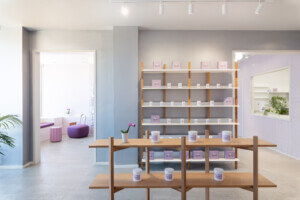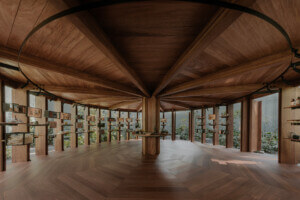Architect Madelynn Ringo established Ringo Studio, a Brooklyn-based firm specializing in experiential environments driven by consumer experience and physical storytelling, in August 2020. The move came after a successful stint as a senior retail designer at Glossier, a beauty brand that capitalized early on the power of social media to drive its industry-defiant and joyfully aesthetic business. Since its founding, Ringo Studio has combined the designer’s expert architectural background with deep understanding of brand identity to deliver a series of retail spaces for innovative brands such as Modern Age, Studs, Bala, and, most recently, Our Place.
Translating the California cookware’s well-executed digital operation into physical space was no small feat: Our Place has made waves in the culinary industry through its cohesive brand identity, buzzy celebrity partnerships, a soothing color palette, and a well-designed product that combines the functionality of eight pans into one. In order to understand how these features are communicated Our Place’s physical store, AN Interior sat down with Ringo to discuss the evolving retail environment and the power of the consumer experience to inform design.
Sophie Aliece Hollis: After building an impressive resume at number of established architecture firms, you founded Ringo Studio in 2020 and have since been focused on branded environments. Where along the way did you identify your passion for brand identities?
Madelynn Ringo: I moved straight to New York after receiving my Bachelor of Arts in Architecture from the University of Kentucky. I didn’t really have a plan, but I ended up getting a job with Standard Hotels. There, I worked on the Highline and other luxury hotel locations. I had an incredible mentor and boss. He was much more of an artist, a real creative, and working in house with him was so instructive on the ethos of branded environments. To parallel what we’re doing now at Ringo Studio, this role introduced me to the process of filtering every touchpoint of design through a brand and its language and ideology. In retrospect, it was the perfect first job.
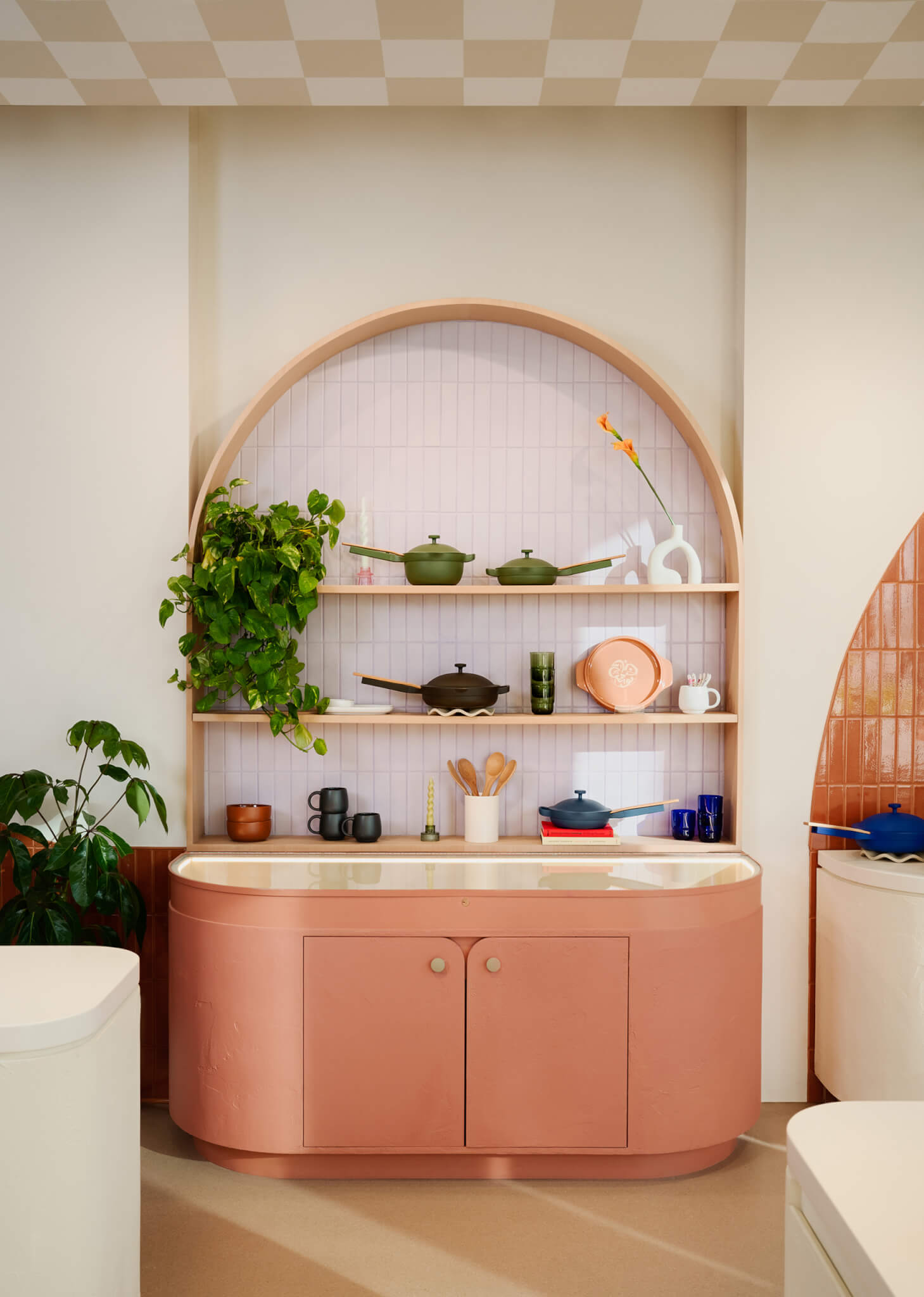

SAH: You re-entered the branding space in a big way after receiving a M.Arch from Yale in 2016. At the time, beauty brand Glossier was exploding across the digital landscape and had made its way into physical spaces with buzzy, experiential pop-up shops. How did you get involved with Glossier’s retail effort and what did you gain from this branded design experience?
MR: After graduate school, I was freelancing, and a friend approached me looking for help on a retail project at Glossier. To be honest, I had no idea what Glossier was then, but the opportunity sounded interesting, so I took it. Looking back, it was really a right-place-right-time kind of thing.
When I started at Glossier, I quickly realized how much of an architectural problem was on the table. I was so excited to be on a team with other creative thinkers—art directors, innovative marketers, product designers—and the brand tasked us with creating our own version of Glossier in physical form. It was a huge leap professionally because I quickly became responsible for so much of that translation. I think the most important thing I learned was the recipe for how to physically communicate a brand. You have to consider the customer journey: The physical space does not necessarily need to be transactional; it’s much more about creating a sense of community and allowing participation in the brand message. We worked to create experiences where customers came to the store and were surprised by something, discovered something, or felt like they could see themselves as a part of the brand’s story.
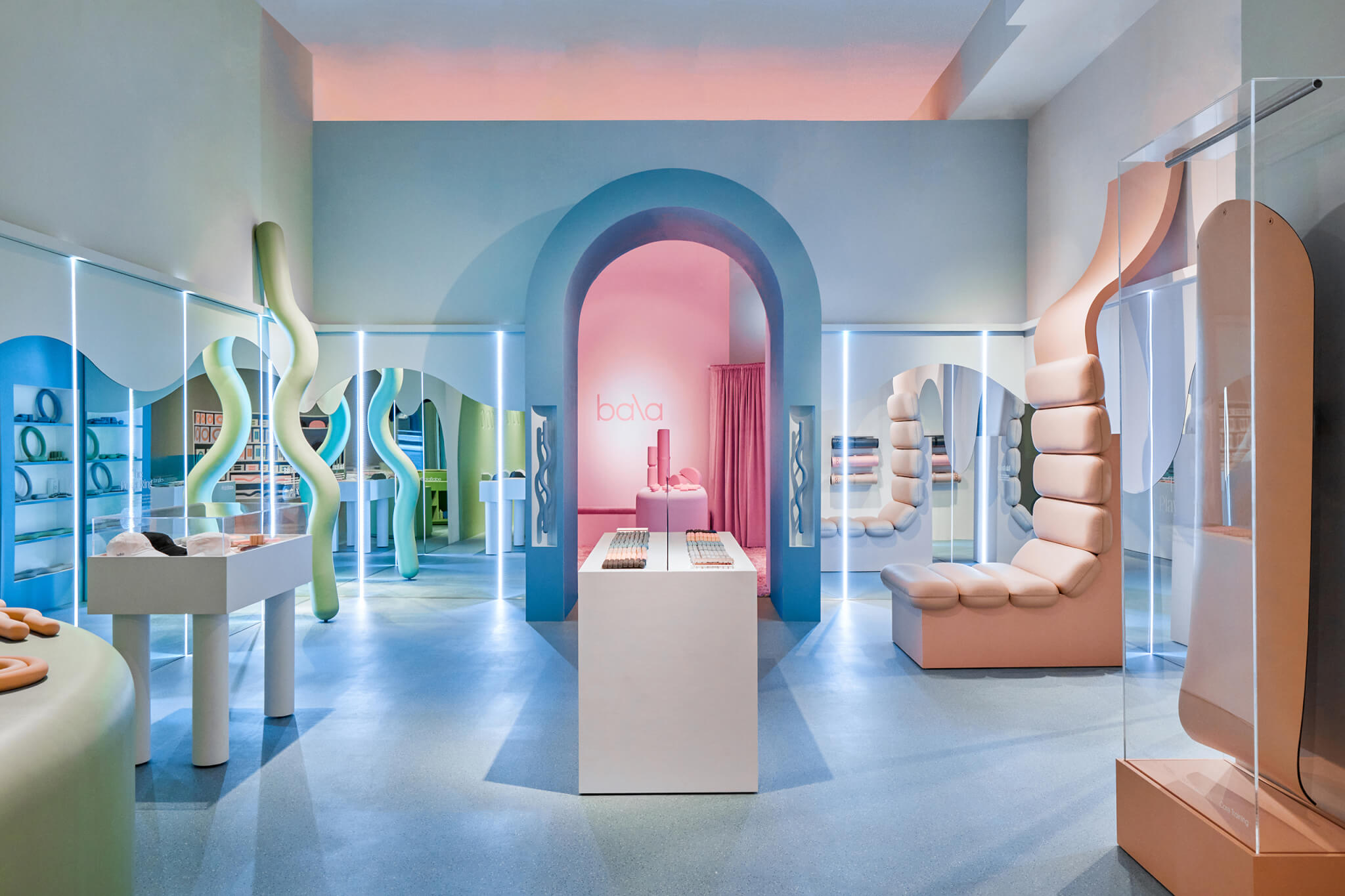
SAH: How does this differ from the traditional retail experience?
MR: In the last five or so years, brands like Glossier and, for example, Bala (for whom we designed a pop-up in Soho last year) have thrived by doing things differently. For Glossier, it was rethinking the beauty industry. For Bala, it was challenging the traditional notion of and venue for exercise. In doing so, their retail spaces shifted to become more public cultural destinations rather than exclusive, transactional centers. Designing for this is exciting because it offers an avenue to create very sculptural and playful worlds. It’s also allowed us as a team to break out of a strict emphasis on architecture and think deeply about branding from customer experience to graphic design to marketing campaigns. My goal is not to be a traditional architecture office but instead to create a team and studio where we’re not only thinking about interiors and architecture but also how those things translate into a brand identity. Retail has been the perfect space for us to do this.

SAH: How does this ambition read in your latest project for L.A.-based cookware brand, Our Place?
MR: The Our Place brand ultimately hinges on the idea of cooking as an inclusive, joyful way of bringing people together. Looking at the items and objects that go into the process of cooking, the brand wanted to use design to create cookware that was both beautiful and applicable to of all kinds of cuisines and cooking. When we began working with Our Place and developing the narrative for the store, we wanted the customer to feel as though they were walking directly into someone’s—perhaps their chicest friend’s—home and shopping this experience right from the counters. Within the store we have a table that’s styled and set, almost like a dinner party frozen in time. We designed displays to demonstrate the extreme versatility of the cookware. One of our taglines throughout the design process was “Build a Bigger Table,” so we created a surprise moment in the back of the store. A room covered in mirrors perpetuates the image of a weighty table and complimentary sculptural objects alongside Our Place products. Internally we call it “the room of wonders,” but it’s an example of a moment where we can directly translate the brand message into an experience.

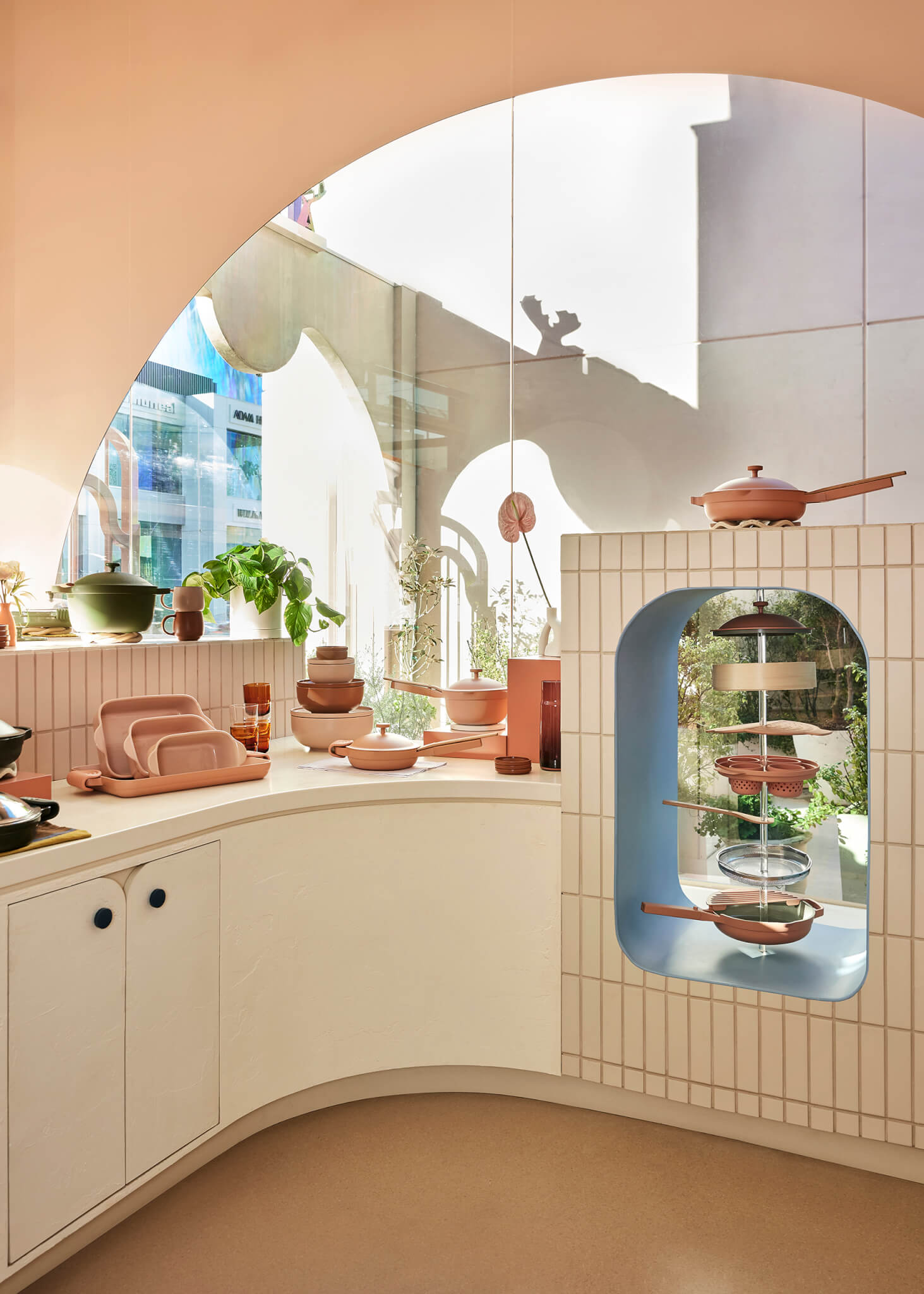
SAH: As with your work with Glossier and Bala, the colors and materials employed in the Our Place store are in direct conversation with brand’s products. Since its founding in 2019, Our Place’s palette of refined pastels and its use of toxin-free ceramic have remained important facets of the brand. How does your design serve to celebrate these features?
MR: To play on the concept of domesticity, we took the handedness and familiarity of tile and essentially covered the store. Just like any project, we began sourcing samples of all kinds of tiles. At one point we had hundreds of options on the table because, as you mentioned, we were trying to find the perfect material translation that would not compete against this beautiful product. After extensive research, we decided on Fireclay Tile but had to be very careful in sourcing a manufacturer that carried the colors we needed and could scale production with the brand as well. We paired that ceramic tile with soft materials you might find in a home like linen drapes and plush furniture. A rich terra-cotta limewash adds to the comforting imperfection and makes the space feel warm and inviting. Modular curving fixtures replicate the curves of the products. One of my favorite elements is the drop ceiling, which incorporates a checkered pattern used in much of the Our Place marketing campaigns. It makes the space feel like one big picnic.








